
[297] Rattus norvegicus, Rat
Introduction
Rattus norvegicus, the Rat, is a very common and very widespread small animal, normally treated as unwanted vermin.
It can be called the Brown Rat, Common Rat, Street Rat, Sewer Rat, Wharf Rat, Parisian Rat, Norway Rat or Norwegian Rat but is usually just called a Rat.
There are hundreds of species called Rats.
Taxonomy
Kingdom – Animals
Phylum – Chordates
Class – Mammals
Order – Rodentia
Suborder – Myomorpha
Superfamily – Muroidea (Mice, Rats, Voles, Hamsters, Gerbils and others)
Family – Muridae (Mice, Rats and Gerbils)
Subfamily – Murinae (Old World Rats and Mice)
Tribe – Rattus
Genus – Rattus
Scientific Name – Rattus norvegicus.
The Fancy Rat and Laboratory Rat may be called Rattus norvegicus domestica. (It is not clear why this has what looks like a feminine ending when the masculine domesticus would match Rattus and norvegicus. It can only be a noun in apposition, domestica meaning housekeeper. See Names.)
Name
The Brown Rat was originally called the Hanover Rat in Eighteenth Century England to associate it with the House of Hanover. It was named Rattus norvegicus in 1769 by the English naturalist John Berkenhout, who believed it had come from Norwegian ships. Its exact origins remained uncertain but it now assumed to have come vie Persia (now Iran) in the early Eighteenth Century.
The word rat comes via Old English from Germanic, Indo-European roots. The Brown Rat was unknown in Northern Europe until fairly recently – so it may have applied to the Black Rat at first.
In mediaeval Latin the word rattus was used for a rat, coming from the Germanic. (In earlier Classical Latin the word mus meant either a mouse or a rat.)
Rats in general
There are about five or six hundred species in the Murinae subfamily, generally called rats or mice. The long, thin tail is a distinctive feature. There is no taxonomic distinction between rats and mice. Newly discovered species are generally given the name Rat or Mouse depending only on size. Many other less closely related species of rodents are also called rats.
The genus Rattus has at least sixty species but may also be considered to include all the species of about 35 other genera!
Norwegian Rat
The Rat is very much like a larger version of a Mouse. They can be brown or dark grey. I won’t attempt to describe them or how they differ from their relatives.
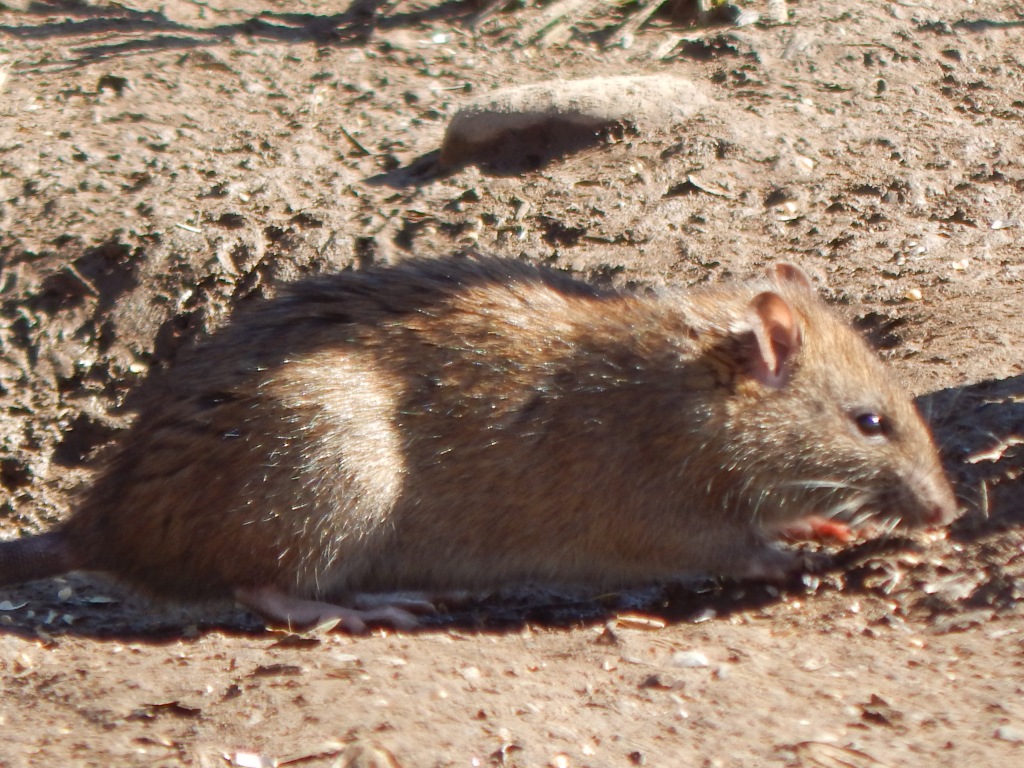
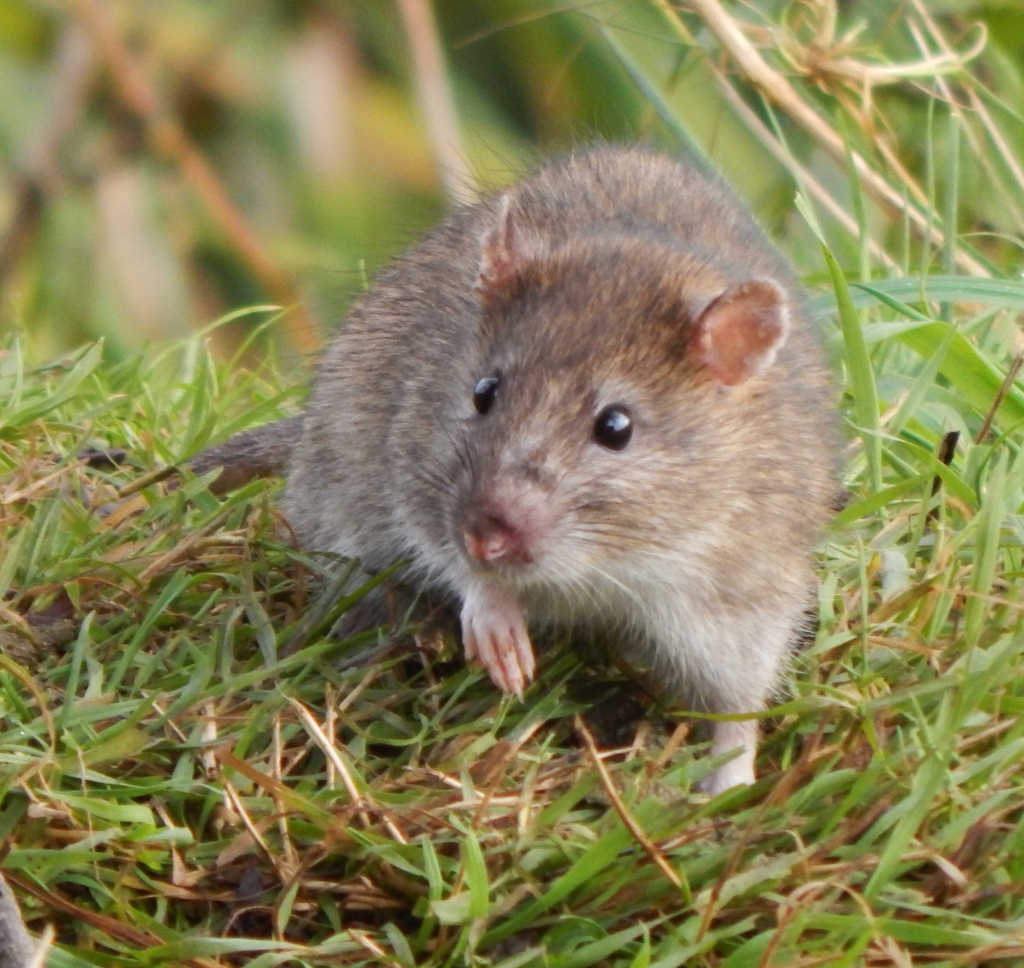
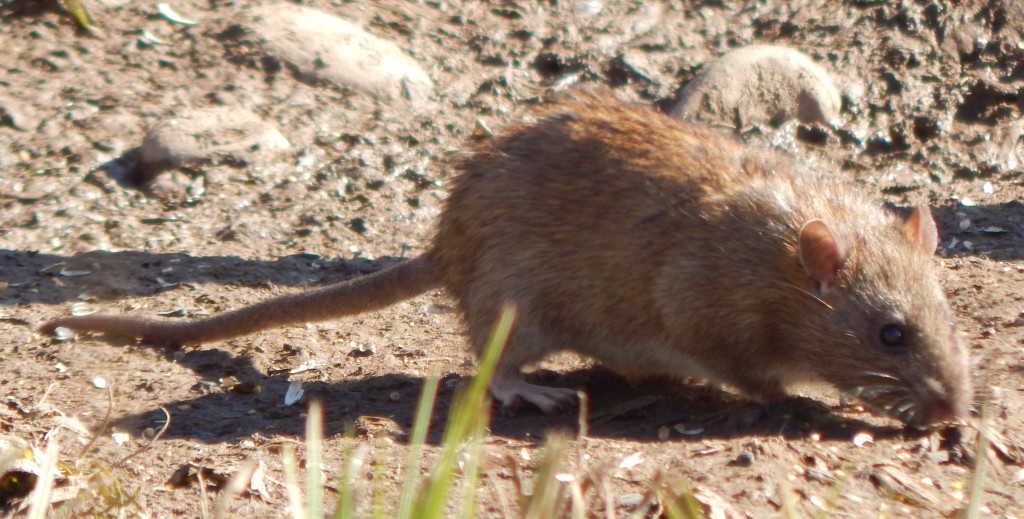
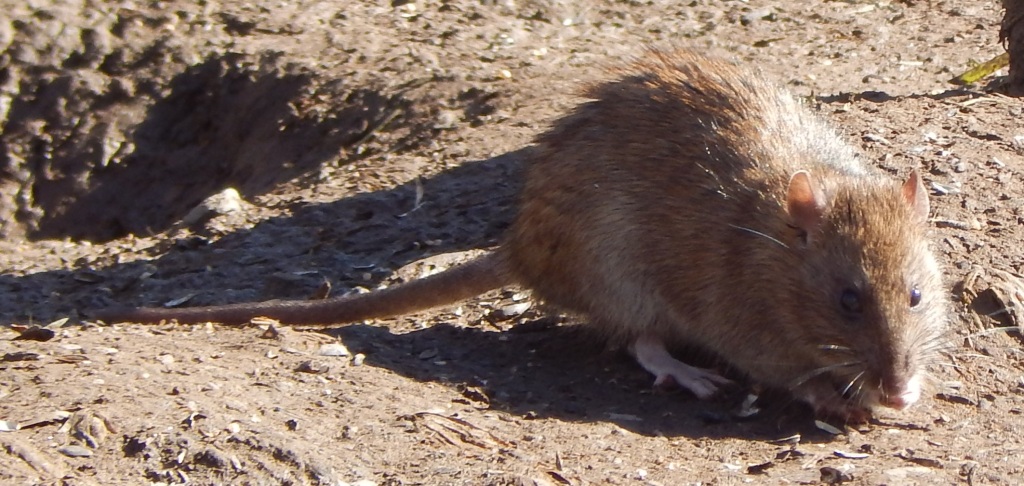
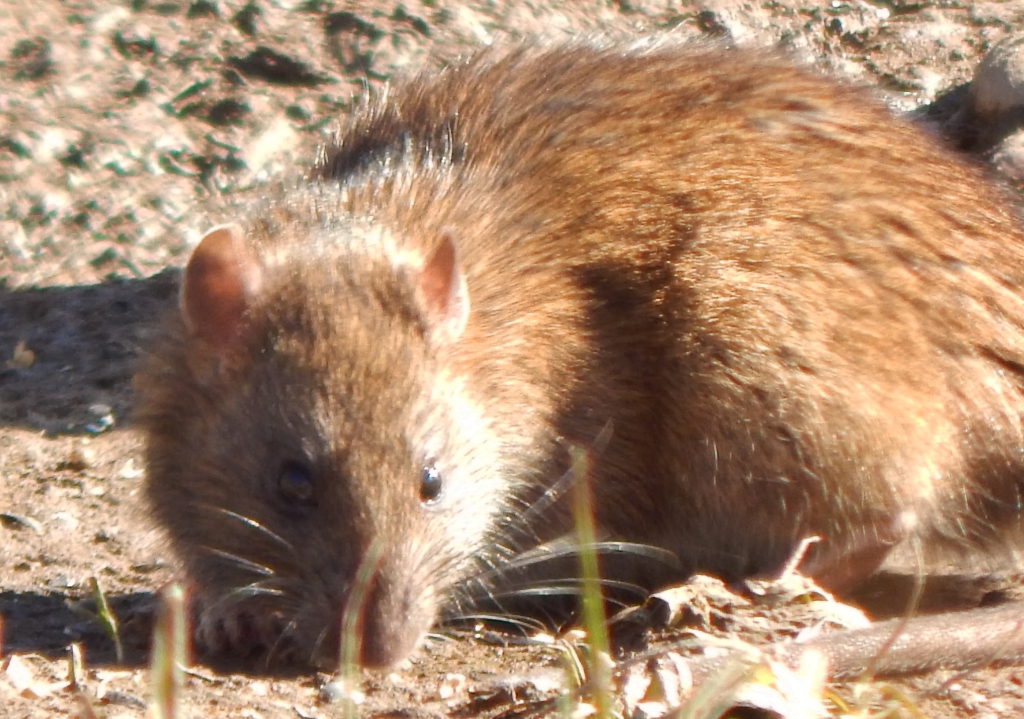
Over most of the World the Brown Rat is now associated with people and it has spread with people to cover the World. It has largely replaced Rattus rattus, the Black Rat, which spread across Europe about a thousand years earlier.
First sightings in Europe were about 1550, reaching France, Germany and Britain around 1730-50.
The population of rats in the UK is estimated to be a little over the human population.
Habitat and use
Rattus norvegicus was originally native to southeast Siberia, northeast China and parts of Japan but is now found worldwide.
For its use as a Fancy Rat (a show animal or pet) and as a laboratory animal, see [232] Mouse, which has similar variants.
Rats can live in damp environments such as river banks but are often associated with human habitation and sewers.
Other Notes
I don’t think what I am going to say will surprise you but almost all of the rats I have seen have been associated with outdoor areas associated with bird feeders. They can climb up and dislodge things like suet balls and happily scavenge what falls to the ground. It is a pity that sometimes the bird feeders are removed because of the hazard of rats. They are generally treated as vermin – unwanted animals associated with spreading disease and destroying crops.
See also
See [232] Mouse, which also considers Fancy Mice and Laboratory Mice.
[042] the Water Vole is a close relative sometimes called the Water Rat,
